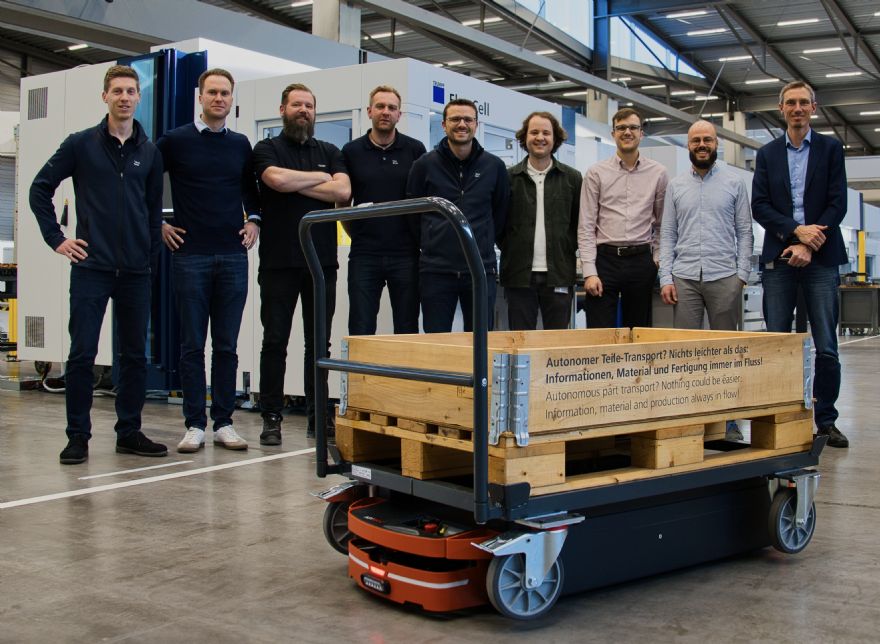 The mobile robots can travel to up to nine stations in production. There they hand over the material to the production employee. Photo: Trumpf Group
The mobile robots can travel to up to nine stations in production. There they hand over the material to the production employee. Photo: Trumpf GroupAutomating material transport in manufacturing poses challenges for many companies. Typically, this process requires an organisation to digitalise and network its entire manufacturing process — an investment that can prove costly. With the ‘Material Flow Kit’,
Trumpf and
Safelog have developed a solution that is easy to use and requires less installation effort. With this solution, mobile robots transport the material through the production process. The vehicles can be controlled via a web application that works on any mobile device in the user’s network.
Trumpf’s product manager Christian Frei said: “With the Material Flow Kit, production staff can concentrate more on value-adding activities at the machines. Transport orders for the mobile robot can be created with just a few clicks in the web app. This alleviates the shortage of skilled workers while also increasing productivity in sheet metal processing.”
Trumpf showcased the solution for the first time at its in-house trade fair,
INTECH, which also served as the solution’s product launch. The Material Flow Kit allows the mobile robots to access up to nine stations. These include machines in the sheet metal production area as well as manual workstations or the shipping area. Up to eight transfer points can be specified for the goods to be transported to each station. As soon as a production employee wants to transport the parts they have processed, they request the mobile robot via the web app.
This enables them to transfer the workpieces to the vehicle on a pallet trolley without needing to leave their workstation. The mobile robot can transport loads of up to one tonne, making it suitable for the majority of components in sheet metal production. Changes to the route plan, if for example a machine changes location, can be carried out by the customer themselves using included software.
Built-in sensor
When commissioning the system, a Safelog service technician guides the mobile robot through the factory, for example with a tablet. During this process, the vehicle scans the environment with its built-in sensors and creates a virtual map of the factory. The technician then creates the route with its associated process steps at each individual station such as bending, punching and laser cutting in the software tool. In the final step, the web application seamlessly sends the transport order to the vehicle. This allows the mobile robot to navigate autonomously and safely through the production process.
The Material Flow Kit is suitable for companies that want to digitalise their production in stages. Mr Frei continued: “Once companies have gained initial experience with the Material Flow Kit, we recommend introducing the Trumpf software Oseon. This allows them to synchronise the material flow with the production plan. This way, the material always automatically goes to where it is needed — without disruptions and paperwork.”
Trumpf customers can now also use Safelog’s other robot solutions for their smart factory. Daniel Andreas Bühler from the partner management department at Trumpf, said: “We work with market-leading companies in their respective industries on our technologies. This enables Trumpf to offer each customer a tailored complete solution from a single source.”